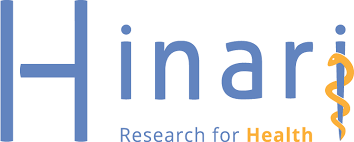LEVEL OF SAFE BEHAVIOR WITH THE IMPLEMENTATION OF HOT WORK PERMIT APPROACH IN PT BBB EAST JAVA

Downloads
Background: The causes of the accident were dominant due to unsafe behavior and other causes due to unsafe conditions and the other factors, especially in the paper industry such as PT. BBB, East Java which has a high risk of fire and the level of workers awareness towards safe behavior so it needed the assessment of safe behavior level based on the implementation of hot work permit system at PT. BBB. Purpose: this study was to determine Level of Safe Behavior with The Implementation of Hot Work Permit Approach in PT BBB East Java. Method: This research used descriptive observational, which was research methods to describe the data of the result of research used information, interview and observation directly by conducting analysis on safe behavior information and hot work permit system at hot work. The technique of data collecting used observation and interview directly. The data obtained then discussed by comparing with existing regulations. Result: The research informed about the level of safe behavior in good category (70%) in the implementation of hot work permit system has the applicable regulations and based on the results 70-98% good category, but there were still obstacles in documentation system, PPE and punishment/reward. Conclusion: Good safety behavior was indicated by the implementation of hot work permit system is good, but there were still some obstacles which are must get a follow-up.
Agiviana, A.P. Djastuti, I. 2015. Analisis Pengaruh Persepsi, Sikap, Pengetahuan Dan Tempat Kerja Terhadap Perilaku Keselamatan Karyawan. Diponegoro Journal Of Management Volume 4, Nomor 3, Tahun 2015, Halaman 2.
Bird E.F, Germain, G.L.1990. Practical Loss Control Leadership. Edisi Revisi, USA: Division Of International Loss Control Institute
Cooper, D. 2001. Improving Safety Culture: A Pratical Guide, Applied Behavioral Sience. UK.
Corporate Health and Safety Executive. 1999. Guidance on permit-to-work systems. http://www.hseni.gov.uk/hsg250_guidance_on_permit_to_work_systems.pdf (diakses 3 Januari 2017).
Fausiah. 2013. Pengaruh Sikap, Norma Subyektif & Persepsi Kontrol Perilaku Terhadap Intensi Karyawan untuk Berperilaku K3. Jurnal Indonesia.
Ferraro, L. 2002. Measuring Safety Climate: The Implications for Safety Performance. The University of Melbourne.
Geller, E.S. 2001. Working Safe: How to Help People Actively Care for Health and Safety. 2nd Edition. USA: CRC Press LLC.
Geostsch, et.al.1996. Safety and Health Management. Amsterdam Hall: Mac Gill Inc.
Halimah, S. 2010. Faktor-Faktor yang Mempengaruhi Perilaku Aman Karyawan di PTSIM Plant Tambun II Tahun 2010. Jakarta. Skripsi UIN.
Helliyanti, P. 2009. Faktor-faktor yang Berhubungan dengan Perilaku Tidak Aman di Dept. Untility and Operation PT Indofood Sukses Makmur, Tbk Divisi Bogasari Flour Mills tahun 2009. Skripsi. Depok: FKM UI.
Hughes, P, Ferrett E. 2009. Introduction To Health And Safety At Work:The Handbook For The NEBOSH National General Certificate, Elsevier, Burlington, Massachusetts.
Keputusan Menteri Tenaga Kerja Republik Indonesia No.Kep.186/MEN/1999 tentang Unit Penanggulangan Kebakaran di Tempat Kerja.
Khaqim, E.S. 2014. Analisis Sistem Ijin Kerja (SIKA) terhadap Kejadian Kecelakaan Kerja di PT. Bakrie Construction Serang Banten. Kesehatan Masyarakat Fakultas Ilmu Kesehatan. Skripsi. Universitas Muhammadiyah Surakarta.
Kusuma, R.Y. 2013. Hubungan antara Pengetahuan, Sikap, dan Kenyamanan dengan Penggunaan Alat Pelindung Wajah Pada Pekerja Las Listrik Kawasan Simongan Semarang. Skripsi. Fakultas Ilmu Kesehatan: Universitas Negeri Semarang.
Mahardika, V.Z. 2017. Hubungan Karakteristik Individu dengan Tindakan Pengelasan di PT Alim Ampuh Jaya Steel Sidoarjo. The Indonesian Journal of Occupational Safety and Health, Vol. 6, No. 1.
Mangkunegara, A.P. 2005. Evaluasi Kinerja SDM. Bandung: Penerbit PT Refika Aditama.
National Fire Protection Association (NFPA). 2014. "Standard for Fire Preventing During Welding, Cutting, and Other Hot Work, An International Codes and Standard Organization” : Quincy.
National Safety Council. 2011. Injury Facts, 2011 Edition. Itasca, IL: Author
Neal, A., Graffin, M. 2002. Safety Climate and Safety Behavior, Australian Journal of Management.
Notoatmodjo, S. 2003. Pendidikan dan Perilaku Kesehatan. Jakarta: Rineka Cipta.
Peraturan Menteri Tenaga Kerja dan Transmigrasi No. 08/MEN/VII/2010 tentang Alat Pelindung Diri.
Peraturan Pemerintah No. 50 tahun 2012 tentang Penerapan Sistem Manajemen Keselamatan dan Kesehatan Kerja.
Permenakertrans No. Per.01/Men/1980 tentang Keselamatan dan Kesehatan Kerja pada Konstruksi Bangunan.
Permenakertrans RI No. Per.03/MEN/1978 tentang Persayaratan Penunjukan dan Wewenang.
Petersen, D. 1998. Safety Management A Human Approach, New York: Profesional and Academic Publisher Gohsen Aloray Inc.
Reason, J. 1997. Managing the Risk of Organizational Accidents, Ashgate Publishing Limited, England.
Saifullah, M., Nopriadi. 2012. Pengaruh Fundamental Safe Work Practice Terhadap Pencegahan Kecelakaan Kerja Bagian Workover di PT. ACS Duri. Jurnal Kesehatan Komunitas, Vol. 1, No. 4, Mei 2012 pp 199.
Shiddiq, S. 2013. Hubungan Persepsi K3 Karyawan dengan Perilaku Tidak Aman.Jurnal Indonesia.
Sialagan, T.R. 2008. Analisis Faktor-faktor yang Berkontribusi pada Perilaku Aman di PT EGS Indonesia Tahun 2008. Tesis. Depok : FKM UI.
Simanjuntak, Y.E, Halinda S.L, Arfah ML. 2012. Gambaran Pengetahuan, Sikap & Tindakan Pekerja pada Bagian Produksi Mengenai Penerapan SMK3 di PT. Toba Pulp Lestari Porsea Tahun 2012. Program Sarjana Fakultas Kesehatan Masyarakat, Tesis. Universitas Sumatera Utara Peminatan. Keselamatan dan Kesehatan Kerja.
Sugiyono. 2001. Metode Penelitian Bisnis. Bandung : Alfabeta.
Sugiyono. 2012. Metode Penelitian Kuantitatif, Kualitatif dan R&D. Bandung: Alfabeta
Sulastre, M.Z, Faridah I. 2012. Employers Behavioural Safety Compliance Factors toward Occupational, Safety and Health Improvement in the Construction Industry. Procedia - Social and Behavioral Sciences 36 742 – 751.
Suma'mur, P.K. 1996. Keselamatan Kerja dan Pencegahan Kecelakaan Kerja. Jakarta: PT Gunung Agung.
Tarwaka. 2015. Keselamatan, Kesehatan Kerja dan Ergonomi (K3E) dalam Perspektif Bisnis. Surakarta: Harapan Press.
The Keil Centre. 2002. Behaviour Modification to Improve Safety: Literature Review. Health and Safety Executive.
Undang-Undang Republik Indonesia Nomor 1 Tahun 1970 tentang: Keselamatan dan Kesehatan Kerja.
Copyright (c) 2018 Journal Of Vocational Health Studies

This work is licensed under a Creative Commons Attribution-NonCommercial-ShareAlike 4.0 International License.
- The authors agree to transfer the transfer copyright of the article to the Journal of Vocational Health Studies (JVHS) effective if and when the paper is accepted for publication.
- Legal formal aspect of journal publication accessibility refers to Creative Commons Attribution-NonCommercial-ShareAlike (CC BY-NC-SA), implies that publication can be used for non-commercial purposes in its original form.
- Every publications (printed/electronic) are open access for educational purposes, research, and library. Other that the aims mentioned above, editorial board is not responsible for copyright violation.
Journal of Vocational Health Studies is licensed under a Creative Commons Attribution-NonCommercial-ShareAlike 4.0 International License














































